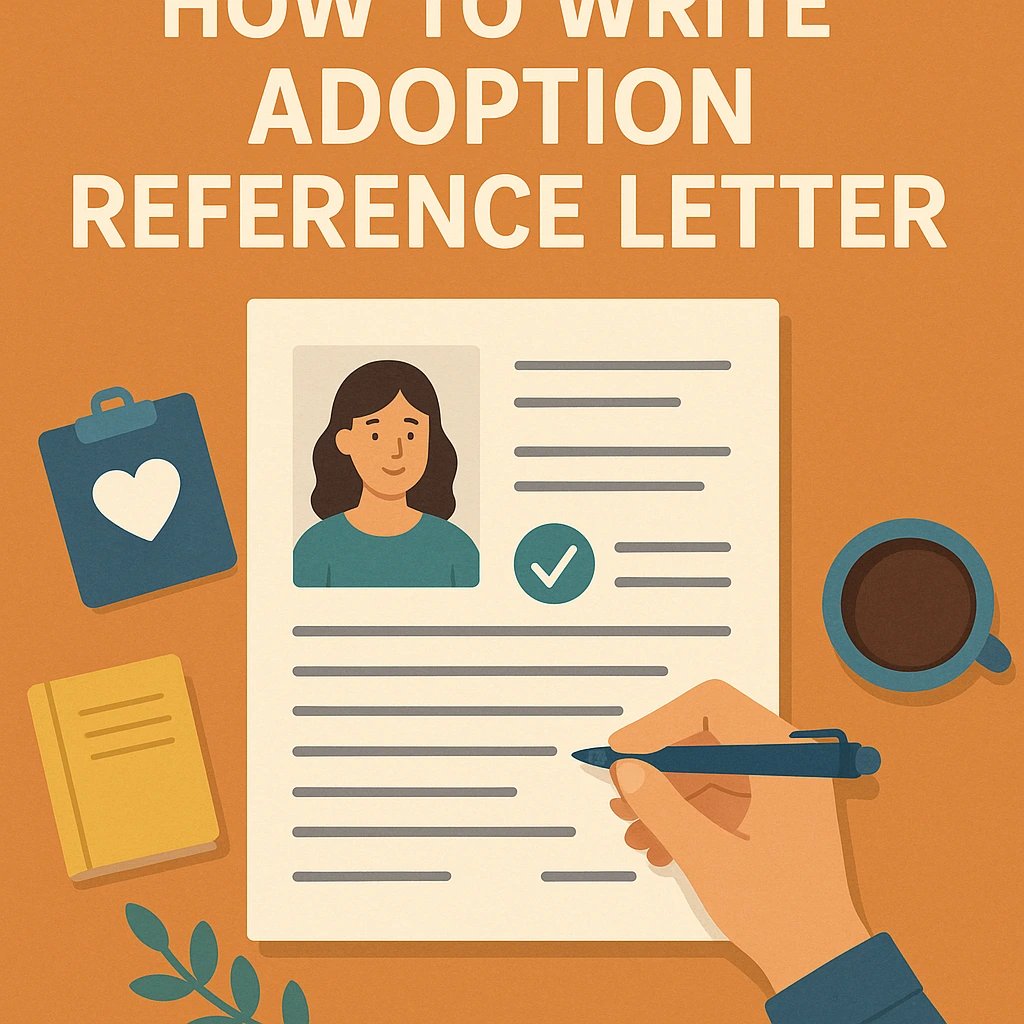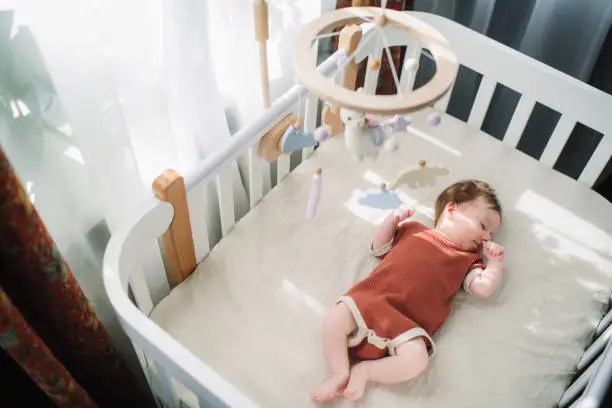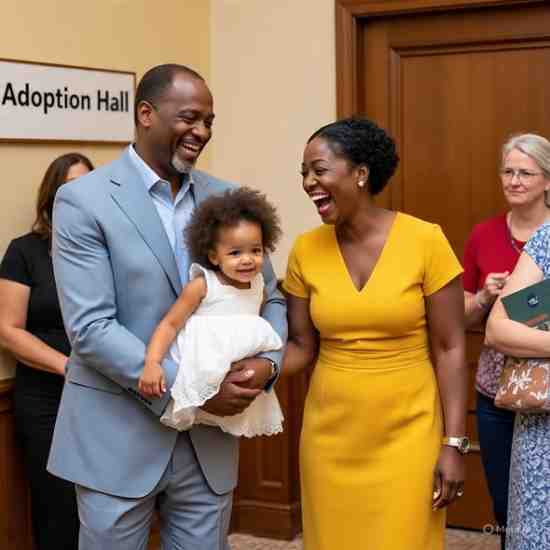Adoption Reference Letter: All You Must Know About It

An adoption reference letter plays an important role in the adoption process as a character testimony for the adopting family. These letters are what adoption agencies and courts will assess to know whether the applicant would take good care of the child after adoption or not.
Did you see how important it is?
The truth is that whether you are hopeful parents just navigating the adoption journey or you want to write a reference for somebody, understanding why you must present an effective adoption reference later is a good plus to your adoption journey.
Navigating adoption involves proper evaluation, and personal references show everything about you as the applicant, which paperwork alone cannot do.
Throughout this guide, I will show you the essential components, best approaches, and common pitfalls you must know when crafting an adoption reference letter to support prospective adoptive parent in their journey. Before we dive in, let’s understand what this letter means.
What Is an Adoption Reference Letter?
A reference letter is a formal document written by someone for a prospective adoptive parent about how well they know her and can attest to their character, parenting abilities, and stability. These letters are a form of third-party endorsements the adoption professionals use to check applicants beyond their application materials.
The Purpose and Importance of Reference Letters:
This reference letter serves as an indispensable document in the adoption process that provides third-party verification of the prospective adoptive parents’ capabilities. Adoption agencies and courts need these letters to gain more insights that might not be possible from formal application alone.
A properly written adoption reference letter can effectively strengthen an application by highlighting all the qualities that make an applicant eligible to adopt a baby. It also helps the authorities to assess the candidate’s stability, parenting philosophy, and readiness to provide the best environment for the child.
In adoption, the children’s best interests are always the priority, and the reference documents help to ensure that only qualified people become adoptive parents. The importance of these reference letters is the reason why it is one of the indispensable supporting documents in the entire adoption application.
Who Should Write Adoption Reference Letters?
Ideal reference writers are those who know you well and who can provide detailed information about your character and parenting abilities. This includes :
- You are a long-term friend who can tell you about yourself, your values, and your personality.
- Your professional colleagues who can speak about your stability and responsibilities.
- Your religious leader who is familiar with your moral character.
- Neighbors who have observed your family interactions.
- People who have seen caring for children.
These references must have known you for 2-5 years minimum. Agencies don’t so much value references from family; they typically prefer unrelated individuals who can provide clear perspectives on different aspects of your life. That’s why you must choose people who can testify to your capacity to provide a good and stable home for a child.
Key Components of an Effective Adoption Reference Letter:
A well-written letter of reference should contain all the important elements that will help support the prospective parents’ adoption application. The letter must begin with an introduction that explains your relationship to the applicant and how much you have known them. It should also include certain examples that will demonstrate the character traits necessary for parenting, like patience, compassion, and emotional stability.
An effective adoption letter of reference should address the couple’s financial stability, relationship dynamics, home environment, and other relevant facts about your experience with children.
It is also important to capture the applicant’s motivation for adoption and their preparedness for the impending challenges ahead.
The most persuasive adoption reference letter balances a professional tone with personal warmth and combines factual observations with heartfelt endorsement while remaining honest and authentic throughout.
Format and Structure Guidelines:
A professionally written adoption reference letter generally follows business letter patterns with contact information, date, formal greeting, body paragraphs organized by topics, etc. Most agencies prefer it to be at least 1-2 pages in length. It must be concise, but detailed enough to provide salient insights about the application.
How To Write A Letter Of Reference: Step-by-Step Guide:
To write a top-notch reference letter, you must thoughtfully prepare for it and carefully execute it. Begin by understanding the main requirements of a court or adoption agency and how their format expectations must differ. Start with the usual business letter formatting, which includes the date, your contact information, and the recipient details.
Start the letter with a formal greeting followed by a clear statement of purpose to explain your intent to recommend the applicants. The body of your letter should fully explain your relationship with the prospective parents and also provide some examples of things that would make them better parents.
The conclusion must be a strong direct endorsement and should offer to provide additional information when needed. Before you submit the letters ensure that you proofread them carefully for errors and that the tone remains professional and warm throughout the entire letter.
Common Mistakes to Avoid When Writing Adoption Reference Letters:
Don’t be surprised when I tell you that even well-intentioned writers can make mistakes, too, when crafting adoption references, and it can undermine their effectiveness. Avoid vague generalities such as “they are nice people” without other supporting evidence to strengthen their credibility.
Be sure not to include irrelevant personal information about them that doesn’t relate to how good they are at parenting. Don’t also make the common mistake of overusing hyperbole or making promises about the applicant’s future parenting activities you can guarantee.
The letter should not discuss the biological parents or the adoptee’s circumstances. Avoid focusing on their financial stability or neglecting their emotional readiness. Lastly, just say what you know about the prospective parents without ever generation.
Examples of Reference Letter For Adoption Scenarios:
You may need slightly different approaches when writing adoption references in different situations. For international adoptions, it may be highly required that you emphasize cultural sensitivity and openness to the child’s heritage.
When the adoptive parents are adopting a child with special needs, it will be important to highlight their research, preparation, and other qualities relevant to these challenges. For single-parent adoptions, the reference letter might focus on the applicant’s ability to provide stability independently and support networks.
In the case of step-parent adoption, you must discuss your observed relationship between the child and the step-parents
Religious or faith-based adoption agencies might appreciate references to shared values when appropriate. When you know the specific adoption context, it will be easier for you to tailor your reference letter to meet the most relevant concerns.
Legal Considerations and Requirements for Reference Letters:
There are specific parameters to follow when you are writing adoption reference letters, and they vary by jurisdiction, agency, and adoption. Generally, these letters are expected to be truthful, signed, and sometimes notarized.
Some Agencies may require references from certain categories of people, such as employers, religious leaders, or non-relatives who have known the applicants for several years. The adoption reference letter may need to address particular qualities or other relevant adoption process circumstances.
In some cases, confidentiality protocols decide who reads these reference letters to protect both the writer and the application. Understanding these legal considerations helps you ensure that your adoption reference letter is in sync with all requirements and serves its intended purpose without creating other delays in the adoption process.
Notarization and Authentication Requirements:
Some adoption agencies or jurisdictions may demand that your reference letters be notarized to verify your identity and authenticate all your statements. International adoptions may have different authentication requirements including apostilles or embassy certifications.
Always verify from the prospective parents about their specific requirements before you finalize the reference letter.
Example Of Adoption Reference Letter: Template Analysis:
Taking a look at a properly drafted adoption reference letter template can give you valuable ideas of how a good reference letter should look. A strong temperate normally begins with proper formatting and a succinct introduction to establish your connection with the applicant.
Well-written adoption letter templates must include designated sections for discussing the couple’s environment, financial stability, experience with children, and relationship quality.
They prompt you to also include specific anecdotes that demonstrate these qualities rather than just making claims.
Good templates should also guide you toward a compelling conclusion as well as a direct recommendation statement. However, the main thing to concentrate on is not the template of the reference letter, but to ensure that your writing is genuine.
The Impact of Your Adoption Reference Letter:
There is a need to understand the profound necessity of your adoption reference letter, as it helps you approach writing it with care and consideration. These reference letters often affect adoption professionals’ decisions by providing necessary insights into applicants’ character that are not captured by formal applications.
A top-notch reference letter can be the disparity between denial and approval in competitive adoption situations. Note also that one day beyond your immediate decision, these words may be shared with the adopted child, to offer valuable perspective on their parents’ journey.






